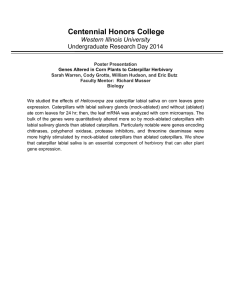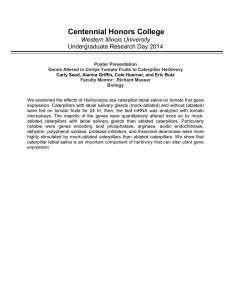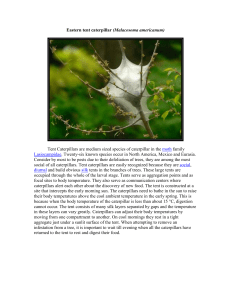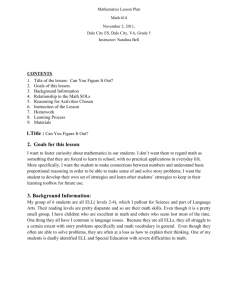Extension-Wise Published Weekly in the Madison County Journal
advertisement
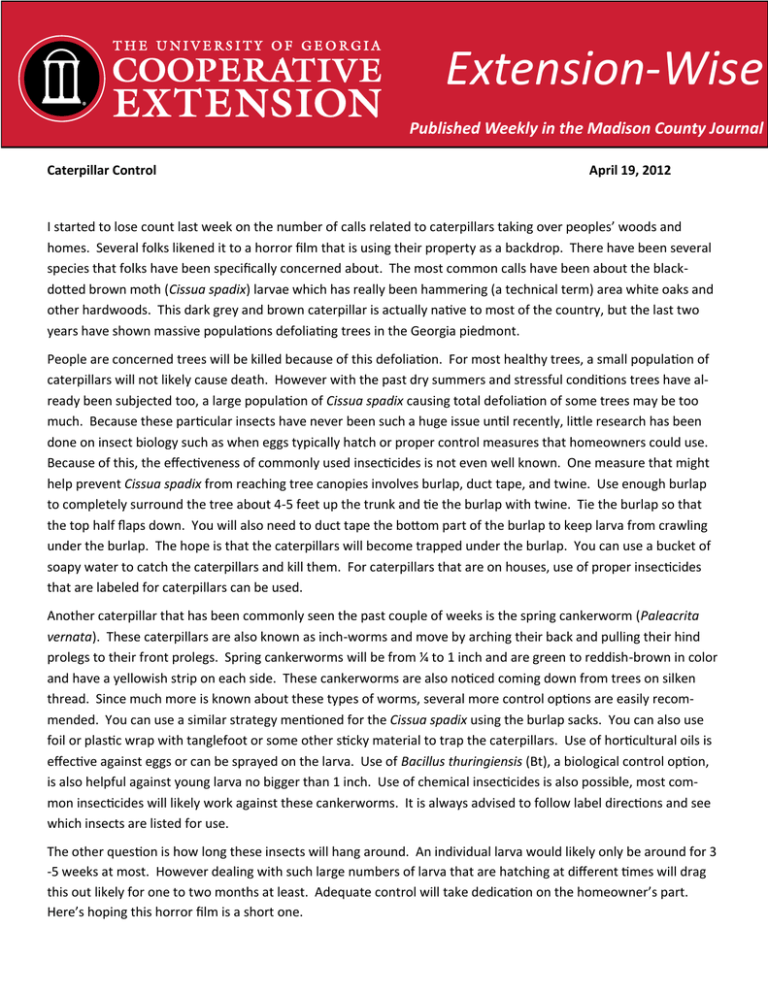
Extension-Wise Published Weekly in the Madison County Journal Caterpillar Control April 19, 2012 I started to lose count last week on the number of calls related to caterpillars taking over peoples’ woods and homes. Several folks likened it to a horror film that is using their property as a backdrop. There have been several species that folks have been specifically concerned about. The most common calls have been about the blackdotted brown moth (Cissua spadix) larvae which has really been hammering (a technical term) area white oaks and other hardwoods. This dark grey and brown caterpillar is actually native to most of the country, but the last two years have shown massive populations defoliating trees in the Georgia piedmont. People are concerned trees will be killed because of this defoliation. For most healthy trees, a small population of caterpillars will not likely cause death. However with the past dry summers and stressful conditions trees have already been subjected too, a large population of Cissua spadix causing total defoliation of some trees may be too much. Because these particular insects have never been such a huge issue until recently, little research has been done on insect biology such as when eggs typically hatch or proper control measures that homeowners could use. Because of this, the effectiveness of commonly used insecticides is not even well known. One measure that might help prevent Cissua spadix from reaching tree canopies involves burlap, duct tape, and twine. Use enough burlap to completely surround the tree about 4-5 feet up the trunk and tie the burlap with twine. Tie the burlap so that the top half flaps down. You will also need to duct tape the bottom part of the burlap to keep larva from crawling under the burlap. The hope is that the caterpillars will become trapped under the burlap. You can use a bucket of soapy water to catch the caterpillars and kill them. For caterpillars that are on houses, use of proper insecticides that are labeled for caterpillars can be used. Another caterpillar that has been commonly seen the past couple of weeks is the spring cankerworm (Paleacrita vernata). These caterpillars are also known as inch-worms and move by arching their back and pulling their hind prolegs to their front prolegs. Spring cankerworms will be from ¼ to 1 inch and are green to reddish-brown in color and have a yellowish strip on each side. These cankerworms are also noticed coming down from trees on silken thread. Since much more is known about these types of worms, several more control options are easily recommended. You can use a similar strategy mentioned for the Cissua spadix using the burlap sacks. You can also use foil or plastic wrap with tanglefoot or some other sticky material to trap the caterpillars. Use of horticultural oils is effective against eggs or can be sprayed on the larva. Use of Bacillus thuringiensis (Bt), a biological control option, is also helpful against young larva no bigger than 1 inch. Use of chemical insecticides is also possible, most common insecticides will likely work against these cankerworms. It is always advised to follow label directions and see which insects are listed for use. The other question is how long these insects will hang around. An individual larva would likely only be around for 3 -5 weeks at most. However dealing with such large numbers of larva that are hatching at different times will drag this out likely for one to two months at least. Adequate control will take dedication on the homeowner’s part. Here’s hoping this horror film is a short one.




